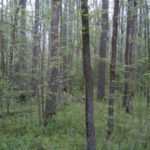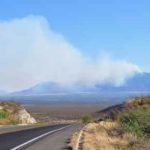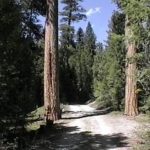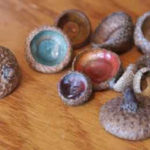Light Pollution
If you have spent any time in a national forest or grassland west of the Mississippi River, it is likely you have noticed the night sky. The sky appears bigger, taller, wider. It also seems darker and has more stars that sparkle, not just twinkle. The Milky Way is clearly visible.
There are some locations that pride themselves on their magnificent night sky. Places like Grandview campground in the Inyo National Forest, Toodstool Park in the Oglala National Grassland in Nebraska and Lakeview campground in the Coronado National Forest in Arizona have wonderful star-grazing opportunities. So what do these campgrounds have in common? First, they have limited a “overstory” so trees don’t get in the way. And they are well away from major light sources a.k.a. major metropolitan areas.
Light pollution is becoming a serious problem across the country for star-grazer. There are several interesting videos on You Tube showing the impact of light pollution on the night sky.
Light pollution is described as the “misdirected or misused of artificial light generally resulting from an inappropriate application of exterior lighting products.” Some claim light pollution is not only detracts from our view of the night sky but the over use of exterior lights is harmful to the environment since it requires electric power to be generated.
I remember driving across country as a child some 50 years ago. With no air conditioning in the car, traveling in the desert was done at night and the night sky was amazing. Somewhere in the Southwest we crested a hill and down there as a town. I could tell it was a town because there were rows of lights. It was Gallop, NM. Today, Gallop has enough lights, point up, down, across and out, you can see it’s glow long before you top that crest. As you can see from the map above, it is much the same from coast to coast. Can you pick out the Los Angeles basin in California, Miami, FL, or maybe the metro-area nearest you?
Light is a good thing. It helps us see. It keeps us safe. It is a beacon that leads us home. But, like everything else, shouldn’t we be using it judiciously? There is a street light near our house that shines on about 60 steps that lead to several other homes above us. That light also shines into bedroom windows. I call that light pollution. I’ve good night-time shade to reduce the light but wonder if the city couldn’t adjust that street light so the light is better directed away from the bedroom windows?
The citizens of Tucson and Flagstaff, AZ are seriously aware light pollution caused by street lights and the exterior lights on homes. There are rules that must be followed. The night sky isn’t as dark as someplace here in Arizona but Tucson and Flagstaff are better than other places like Phoenix, AZ and Las Vegas, NV.
The problem of light pollution doesn’t get a whole lot of press. And I doubt many of us give it a thought until it keeps us from our sleep or when we are away from home and enjoying time in our national forest. Maybe the next time you look up from your campfire and see the Milky Way reaching across the velvet black of the night, you’ll think about what you might do to reduce the light pollution in your neighborhood. It doesn’t have to be much, just a start.







